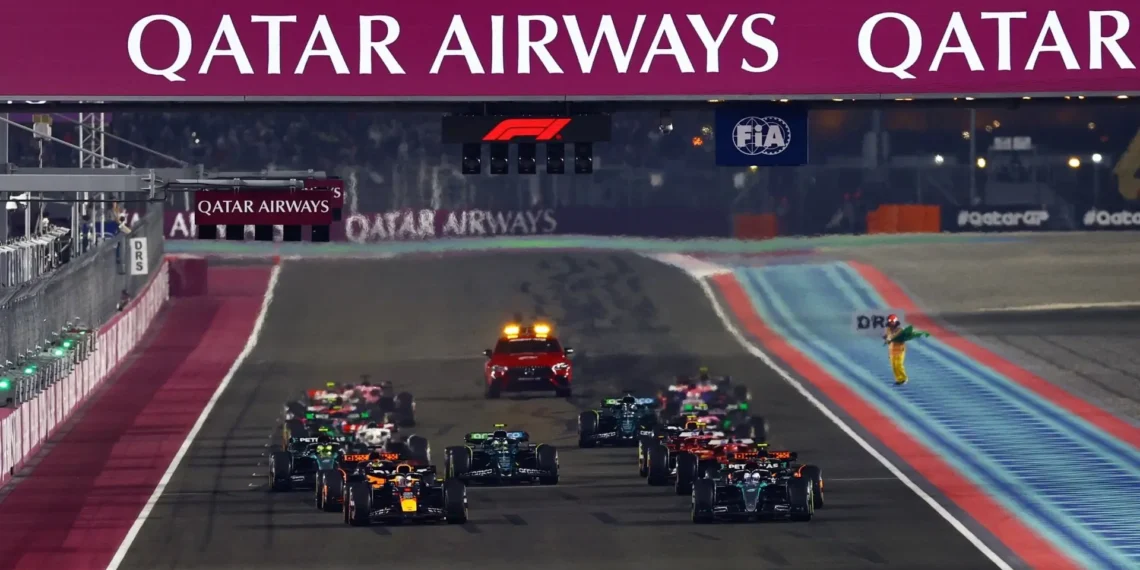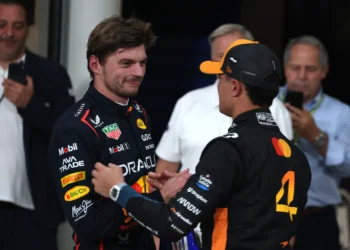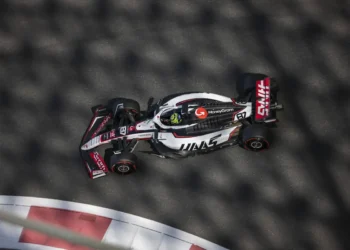F1 Qatar GP Set to Be Ruined by Controversial Two-Pitstop Rule, Warns Haas Team Boss
In a fiery outburst that has sent shockwaves through the motorsport community, Ayao Komatsu, the principal of Haas F1 Team, has blasted the newly imposed two-pitstop rule for the upcoming Qatar Grand Prix, declaring it will “destroy” the race. This bold assertion comes as Pirelli has mandated that cars can only complete a maximum of 25 laps per stint during the 57-lap event, effectively enforcing a two-stop strategy that many believe stifles competitive racing.
The rule, introduced amid ongoing concerns about tire durability, is not a first for the Losail circuit; a similar strategy was enforced last year due to issues with the track’s kerbs causing micro-lacerations in tires, leading to dangerous punctures. However, Komatsu vehemently criticizes this latest decision, suggesting it is a misguided attempt by Pirelli to prevent another dull one-stop race scenario. “I don’t agree with those artificial limits,” he exclaimed, questioning the rationale behind the regulation. “Pirelli is just scared from last year, right? They thought, ‘Surely they’re not going to go this time. Oh no, they’re going.’ So they just put this artificial limit so that it’s impossible to do a one-stop race.”
The Haas team principal emphasized that the crux of the issue extends beyond simply avoiding one-stop races. Highlighting the thrilling action witnessed in Brazil and Mexico, Komatsu urged Pirelli to aim for a balance that allows for multiple strategies to thrive. “When the tire performance is on the edge of one or two stops, or two or three stops, that’s when an exciting race happens,” he insisted. “That’s what Pirelli needs to aim for.”
Reflecting on last year’s race, which required cars to pit three times due to a maximum stint length of only 18 laps, Komatsu lamented the lack of excitement. “That race was bad, wasn’t it? Everybody’s pit stop window was exactly the same. Whenever you do something artificial… Nobody’s stupid, right? People come to basically the same conclusion,” he remarked. His keen insight into the dynamics of racing strategy underscores a broader frustration within the paddock regarding the impact of artificial regulations on the sport’s allure.
The ramifications of this two-pitstop rule could extend beyond just the Qatar GP, as Komatsu pointed to mixed reviews of similar mandates in Monaco earlier this season. “You’re trying to really artificially force something, then you made it worse,” he asserted, echoing the sentiments of countless fans and teams who thrive on the unpredictability that Formula 1 is known for.
As the countdown to the Qatar Grand Prix continues, one thing is clear: the debate over tire strategy is heating up, and the potential for a lackluster race looms large. Will Pirelli’s gamble pay off, or will it backfire spectacularly, leading to a snooze-fest that fans and teams alike will want to forget? Only time will tell, but for now, all eyes are on the grid as tensions rise and expectations collide.










